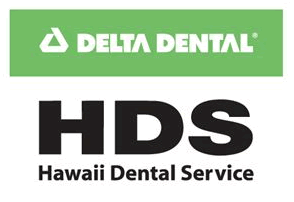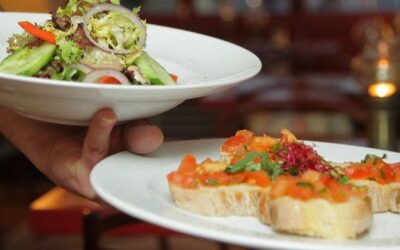If you are what you eat, then it’s particularly true for your teeth and gums. When you drink sugary beverages and eat starchy foods, you’re not only feeding yourself—you’re feeding the plaque that can cause problems in your mouth.
Plaque is a naturally occurring, thin, invisible film of sticky bacteria and other materials that covers the surfaces of your teeth. When sugars or starches in your mouth come in contact with plaque, the acids that result can attack teeth for 20 minutes or more after you finish eating. Repeated attacks can break down the hard enamel on the surface of teeth, leading to tooth decay. Plaque may harden into tartar, which makes brushing and flossing less effective and can lead to periodontal (gum) disease because it harbors bacteria.
While some foods invite tooth decay, others help combat plaque buildup. Here are some foods to seek out—and some to avoid.
The Good Guys
- Sugarless chewing gum. Gum is a great saliva generator that helps remove food particles from your mouth. Just be sure to choose a sugar-free variety. Research has shown that chewing gum for about 20 minutes after you eat helps your saliva neutralize the acids that attack your teeth. And because saliva contains traces of calcium and phosphate, it also helps strengthen tooth enamel.
- Cheese, milk, plain yogurt, and other dairy products. Cheese is another saliva generator that may protect your teeth from decay. The calcium in cheese, as well as the calcium and phosphates in milk and other dairy products, help put back minerals your teeth might have lost due to other foods.
- Green and black teas. Tea contains polyphenols that interact with plaque bacteria. These substances either kill or suppress bacteria, preventing them from growing or producing tooth-attacking acid. And depending on the type of water you use to brew your tea, a cup of tea can also be a source of fluoride.
- Water with fluoride. Fluoridated drinking water, or any product you make with fluoridated water, helps your teeth. This includes powdered juices (as long as they don’t contain a lot of sugar) and dehydrated soups. But watch out for bottled drinking water, which may not contain as much fluoride as water from the tap.
The Bad Guys
- Sugary candies and sweets that stick in your mouth. If you eat sweets, go for those that clear out of your mouth quickly. So thumbs down for sticky lollipops, caramels, and cough drops that contain refined sugar.
- Starchy foods that can get stuck in your mouth. Starches made from white flour, are simple carbohydrates and can linger in your mouth. For example, bread or potato chip bits may get trapped between your teeth. When you get these stuck in your mouth or at the back of your teeth, bacteria love to feed on the carbs.
- Carbonated soft drinks, fruit juices, and more. Besides being laden with sugar, most colas and other soft drinks contain phosphoric and citric acids that erode tooth enamel. Fruit juices, energy drinks, and sweetened iced teas and lemonades may also contain high amounts of sugar.
- Items that dry out your mouth. These include many medications, including some painkillers, antihistamines, and oral asthma inhalers. Try stimulating saliva flow with sugar-free gum or candies. If medications may be the cause, talk with your doctor.
- Lemons and other citrus fruits. It’s OK to eat them, but don’t suck on them. The very acidic juice can erode the enamel of your teeth. Rinse thoroughly after eating citrus fruits or chew sugar-free gum.
Remember: You don’t have to avoid healthy foods that may contribute to tooth decay. Just remember to gently brush at least twice a day using a fluoride toothpaste, paying special attention to your gum line, and floss between your teeth at least once every day. And note this rule of thumb: The longer food that promotes plaque bacteria stays in your mouth, the worse it is. So to protect your teeth, eating fewer sweets is not as important as limiting how often you eat them.
Contact us today to learn how Hawaii Dental Service can ensure a lifetime of healthy smiles for your business and employees.
 MALLORIE LIM | Strategic Account Executive
MALLORIE LIM | Strategic Account Executive
Hawaii Dental Service (HDS)
Phone: (808) 529-9287
Email: mlim@hawaiidentalservice.com
 HDS is the first and largest dental benefits provider in the state, serving more than one million people throughout Hawaii, Guam and Saipan. It has the largest network of dentists with over 95 percent of Hawaii’s licensed, practicing dentists participating with HDS. As a nonprofit founded in Hawaii 55 years ago, HDS is committed to making quality healthcare affordable and accessible, in addition to providing oral health education, preventing oral disease, and increasing access to dental care for underserved populations across Hawaii.
HDS is the first and largest dental benefits provider in the state, serving more than one million people throughout Hawaii, Guam and Saipan. It has the largest network of dentists with over 95 percent of Hawaii’s licensed, practicing dentists participating with HDS. As a nonprofit founded in Hawaii 55 years ago, HDS is committed to making quality healthcare affordable and accessible, in addition to providing oral health education, preventing oral disease, and increasing access to dental care for underserved populations across Hawaii.




0 Comments